
Gran Via: The Beating Heart of Madrid
Discover Gran Via: Madrid's iconic avenue where shopping, dining, and entertainment converge in a dazzling display of architectural beauty and vibrant culture.
Gran Via, often referred to as the 'Spanish Broadway', is Madrid's most famous street. This bustling avenue is a melting pot of culture, history, and modernity. Stretching from Calle de Alcalá to Plaza de España, Gran Via is a vibrant showcase of architectural grandeur, featuring styles ranging from Art Deco to Vienna Secession. As you stroll along Gran Via, you'll be mesmerized by its iconic buildings such as the Metropolis Building with its grand dome and the Telefónica Building, one of Europe's first skyscrapers. The street is also a shopper’s paradise, home to a variety of international brands, local boutiques, and historic department stores like El Corte Inglés. Gran Via is a hub of entertainment. The street is lined with theatres, cinemas, and live music venues, offering a kaleidoscope of performances from musicals to flamenco shows. After the sun sets, Gran Via transforms into a lively nightlife district, with countless bars, clubs, and rooftop terraces where you can enjoy panoramic views of Madrid's skyline. No visit to Gran Via is complete without savoring the local cuisine. The area is dotted with tapas bars, traditional Spanish restaurants, and trendy cafes, perfect for a culinary adventure. Whether you're here to shop, dine, or enjoy the arts, Gran Via promises an unforgettable experience in the heart of Madrid.
Local tips in Gran Via
- Visit early in the morning to enjoy the architectural beauty without the crowds.
- Check out the rooftop bars for spectacular views of Madrid.
- Purchase tickets in advance for popular theatre shows to avoid disappointment.
- Wear comfortable shoes as you'll be doing a lot of walking.
- Take advantage of the many tapas bars to sample a variety of local dishes.
Gran Via: The Beating Heart of Madrid
Gran Via, often referred to as the 'Spanish Broadway', is Madrid's most famous street. This bustling avenue is a melting pot of culture, history, and modernity. Stretching from Calle de Alcalá to Plaza de España, Gran Via is a vibrant showcase of architectural grandeur, featuring styles ranging from Art Deco to Vienna Secession. As you stroll along Gran Via, you'll be mesmerized by its iconic buildings such as the Metropolis Building with its grand dome and the Telefónica Building, one of Europe's first skyscrapers. The street is also a shopper’s paradise, home to a variety of international brands, local boutiques, and historic department stores like El Corte Inglés. Gran Via is a hub of entertainment. The street is lined with theatres, cinemas, and live music venues, offering a kaleidoscope of performances from musicals to flamenco shows. After the sun sets, Gran Via transforms into a lively nightlife district, with countless bars, clubs, and rooftop terraces where you can enjoy panoramic views of Madrid's skyline. No visit to Gran Via is complete without savoring the local cuisine. The area is dotted with tapas bars, traditional Spanish restaurants, and trendy cafes, perfect for a culinary adventure. Whether you're here to shop, dine, or enjoy the arts, Gran Via promises an unforgettable experience in the heart of Madrid.
Iconic landmarks you can’t miss
Plaza Mayor
Discover the charm of Plaza Mayor, Madrid's iconic square, where history meets vibrant street life and delicious Spanish cuisine.

Plaza de España
Explore the historic Plaza de España, a stunning landmark in Madrid featuring impressive architecture, vibrant gardens, and rich cultural heritage.

Royal Palace of Madrid
Explore the Royal Palace of Madrid: a stunning historical landmark showcasing Spain's regal heritage and artistic treasures in a breathtaking setting.

Cibeles Fountain
Experience the iconic Cibeles Fountain in Madrid, a breathtaking blend of art, history, and culture amidst the vibrant city life.

El letrero de Schweppes
Discover the Schweppes Sign, a stunning neon landmark on Gran Vía that embodies the vibrant spirit of Madrid and offers perfect photo opportunities.

Maqueta Centenario de la Gran Vía
Explore the rich history and architectural splendor of Madrid through the detailed model of Maqueta Centenario de la Gran Vía, a captivating tourist attraction.

Teatro Lope de Vega
Discover the enchanting Teatro Lope de Vega in Madrid, where stunning performances and architectural beauty come together to create unforgettable memories.

Templete Metro Gran Vía
Experience the architectural beauty and vibrant atmosphere of Templete Metro Gran Vía, the heart of Madrid's transportation and culture.

Diana Cazadora
Explore the stunning Diana Cazadora sculpture in Madrid, a beautiful tribute to art and culture amidst the vibrant energy of Gran Vía.

Placa de la puerta de entrada a la umbraesfera
Explore the tranquil charm of Placa de la Puerta de Entrada a la Umbraesfera, a delightful square in Madrid's historic Centro district.

Unmissable attractions to see
El letrero de Schweppes
Experience the vibrant heart of Madrid at the iconic Schweppes sign on Gran Vía, a must-visit for every traveler.

Maqueta Centenario de la Gran Vía
Explore the intricate details of Madrid's Gran Vía through the captivating Maqueta Centenario, a model that celebrates the city's architectural heritage.

Placa de la puerta de entrada a la umbraesfera
Explore the vibrant Placa de la Puerta de Entrada a la Umbraesfera, a charming square in Madrid's Centro district, rich in culture and history.

Essential places to dine
Oven Mozzarella Gran Vía 6
Experience authentic Italian cuisine at Oven Mozzarella on Gran Vía - where every bite is a taste of Italy amidst the vibrant energy of Madrid.
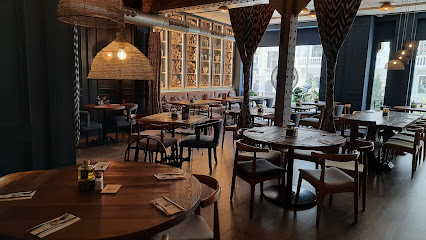
Txapela Gran Via
Discover the vibrant flavors of Basque cuisine at Txapela Gran Via, where authentic tapas and a lively atmosphere await you in the heart of Madrid.

Mercado de la Reina 12
Discover authentic Spanish flavors at Mercado de la Reina in Madrid – your go-to spot for tapas and cocktails in the heart of the city.

Vinitus Gran Via Madrid
Discover authentic Mediterranean cuisine at Vinitus Gran Via in Madrid—where every dish tells a story of tradition and flavor.
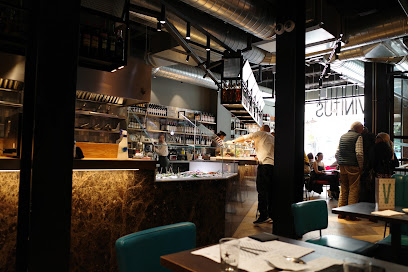
Nice To Meet You Restaurant & Lounge
Discover luxurious Mediterranean dining at Nice To Meet You Restaurant & Lounge in Madrid, where flavor meets elegance.

Parrilla el Gaucho | Gran Vía 72
Experience authentic Argentinian cuisine at Parrilla el Gaucho in Madrid, where expertly grilled meats and vibrant flavors await you.

Mercado de la Reina 10
Discover delicious grilled dishes and authentic Spanish tapas at Mercado de la Reina in Madrid's vibrant Gran Vía area.

Mesón Bar de Tapas El Jamón de Gran Vía
Savor authentic Spanish tapas at Mesón Bar de Tapas El Jamón de Gran Vía, where vibrant flavors meet Madrid's lively dining culture.

La Mafia se sienta a la mesa
Experience authentic Italian cuisine at La Mafia se sienta a la mesa in Madrid - where tradition meets modernity in every bite.

Bloved Restaurante
Discover exquisite dining at Bloved Restaurante in Madrid - where traditional flavors meet modern culinary artistry.

Markets, malls and hidden boutiques
Primark
Discover affordable fashion and unique finds at Primark in the heart of Madrid's bustling Gran Vía.

ALE-HOP
Explore ALE-HOP in Madrid: A treasure trove of gifts, fashion, and home decor in a vibrant shopping experience.
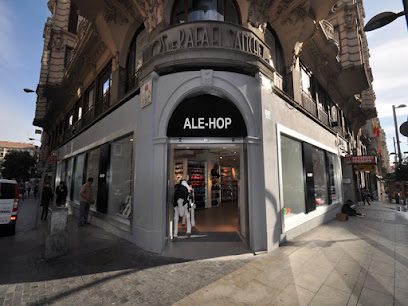
H&M
Explore H&M on Gran Vía, Madrid—your ultimate destination for affordable fashion and stylish accessories for everyone.

Real Madrid Official Stores
Explore the Real Madrid Official Store in Madrid for exclusive sportswear and memorabilia celebrating one of football's greatest clubs.

Stradivarius
Shop the latest women's fashion trends at Stradivarius on Gran Vía, Madrid. Find stylish clothing and accessories to elevate your wardrobe.
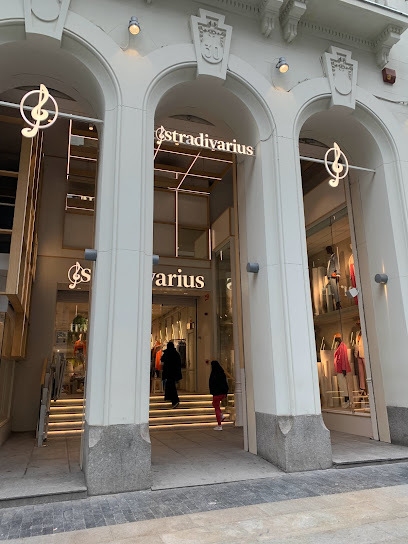
UNIQLO Gran Vía
Discover stylish clothing and unique services at UNIQLO Gran Vía, Madrid's premier fashion destination in the heart of the city.

WOW Concept
Explore cutting-edge fashion and unique lifestyle products at WOW Concept, a must-visit department store in the heart of Madrid's Gran Vía.

Lacoste
Explore Lacoste in Madrid for a perfect blend of style and comfort, featuring a wide range of fashionable clothing and accessories for everyone.

Flying Tiger Copenhagen
Explore Flying Tiger Copenhagen in Madrid for unique gifts, toys, and home goods that bring creativity and fun to your shopping experience.

Nest Boutique
Discover unique gifts and authentic Spanish craftsmanship at Nest Boutique, the charming gift shop in the heart of Madrid's Centro district.

Gran Galería
Discover a vibrant shopping experience at Gran Galería, Madrid's premier mall featuring local boutiques and international brands.

From Madrid whith love.
Discover unique souvenirs and gifts in Madrid's heart at 'From Madrid with Love' on Gran Vía.

Essential bars & hidden hideouts
Picalagartos Sky Bar & Restaurant
Discover culinary delights with stunning views at Picalagartos Sky Bar & Restaurant, a premier dining destination in Madrid's vibrant heart.

Museo Chicote
Unwind at Museo Chicote, Madrid's iconic cocktail bar known for its rich history, exquisite drinks, and vibrant nightlife atmosphere.

Sky 44 Rooftop Terraza & Bar Madrid
Discover the breathtaking views and vibrant atmosphere of Sky 44 Rooftop Terraza & Bar in Madrid, the ultimate spot for cocktails and relaxation.

Bar Cock
Experience the vibrant nightlife of Madrid at Bar Cock, famed for its exquisite cocktails and stylish ambiance, perfect for a memorable evening.

The Moon Terraza Cocktail Bar
Experience the vibrant nightlife of Madrid at The Moon Terraza Cocktail Bar, where stunning views meet handcrafted cocktails in a lively atmosphere.

Bar Terraza Roof Top
Experience the magic of Madrid from above at Bar Terraza Roof Top, where stunning views and delicious cocktails await.

Gin Club
Discover the vibrant atmosphere and exquisite gin cocktails at Madrid's Gin Club, where every sip is a journey into flavor.

Vincci Rooftop Bar Gran Vía
Discover the stunning views and exquisite cocktails at Vincci Rooftop Bar Gran Vía, a must-visit destination in the heart of Madrid.

Clandestino Gran Vía 55
Discover the vibrant nightlife of Madrid at Clandestino Gran Vía 55, where expertly crafted cocktails meet an inviting atmosphere.

Slowly Gran Vía
Discover Madrid's nightlife at Slowly Gran Vía, a charming bar offering a delightful selection of drinks and a vibrant atmosphere in the heart of the city.
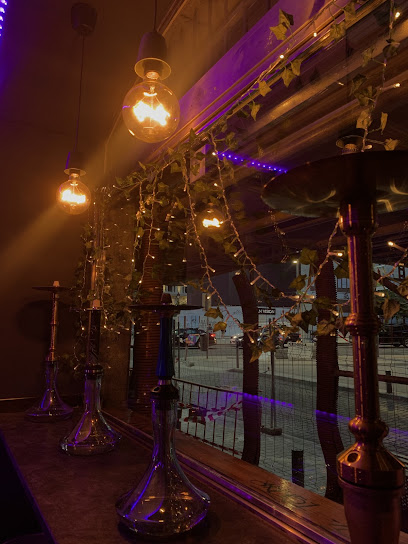
Local Phrases
-
- HelloHola
[oh-lah] - GoodbyeAdiós
[ah-dee-ohs] - YesSí
[see] - NoNo
[noh] - Please/You're welcomePor favor/De nada
[por fah-bor/deh nah-dah] - Thank youGracias
[grah-thyahs] - Excuse me/SorryPerdón/Lo siento
[pair-dohn/loh syen-toh] - How are you?¿Cómo estás?
[koh-moh ehs-tahs] - Fine. And you?Bien. ¿Y tú?
[byen. ee too] - Do you speak English?¿Hablas inglés?
[ah-blahs een-glehs] - I don't understandNo entiendo
[noh ehn-tyen-doh]
- HelloHola
-
- I'd like to see the menu, pleaseQuisiera ver la carta, por favor
[kee-see-eh-rah vehr lah kahr-tah, por fah-bor] - I don't eat meatNo como carne
[noh koh-moh kahr-neh] - Cheers!¡Salud!
[sah-lood] - I would like to pay, pleaseQuisiera pagar, por favor
[kee-see-eh-rah pah-gar, por fah-bor]
- I'd like to see the menu, pleaseQuisiera ver la carta, por favor
-
- Help!¡Ayuda!
[ah-yoo-dah] - Go away!¡Vete!
[veh-teh] - Call the Police!¡Llama a la policía!
[yah-mah ah lah poh-lee-see-ah] - Call a doctor!¡Llama a un médico!
[yah-mah ah oon meh-dee-koh] - I'm lostEstoy perdido
[ehs-toy pair-dee-doh] - I'm illEstoy enfermo
[ehs-toy ehn-fehr-moh]
- Help!¡Ayuda!
-
- I'd like to buy...Quisiera comprar...
[kee-see-eh-rah kohm-prar] - I'm just lookingSolo estoy mirando
[soh-loh ehs-toy mee-rahn-doh] - How much is it?¿Cuánto cuesta?
[kwan-toh kwehs-tah] - That's too expensiveEs demasiado caro
[ehs deh-mah-syah-doh kah-roh] - Can you lower the price?¿Puede rebajar el precio?
[pweh-deh reh-bah-har ehl pree-thyo]
- I'd like to buy...Quisiera comprar...
-
- What time is it?¿Qué hora es?
[keh oh-rah ehs] - It's one o'clockEs la una
[ehs lah oo-nah] - Half past (10)Son las diez y media
[sohn lahs dyehs ee mee-dyah] - MorningMañana
[mah-nyah-nah] - AfternoonTarde
[tahr-deh] - EveningNoche
[noh-cheh] - YesterdayAyer
[ah-yehr] - TodayHoy
[oy] - TomorrowMañana
[mah-nyah-nah] - 1Uno
[oo-noh] - 2Dos
[dohs] - 3Tres
[trehs] - 4Cuatro
[kwah-troh] - 5Cinco
[theen-koh] - 6Seis
[says] - 7Siete
[syeh-teh] - 8Ocho
[oh-choh] - 9Nueve
[nweh-veh] - 10Diez
[dyehth]
- What time is it?¿Qué hora es?
-
- Where's a/the...?¿Dónde está...?
[dohn-deh ehs-tah] - What's the address?¿Cuál es la dirección?
[kwal ehs lah dee-rehk-syon] - Can you show me (on the map)?¿Puedes mostrarme (en el mapa)?
[pweh-dehs mohs-trar-meh (ehn ehl mah-pah)] - When's the next (bus)?¿Cuándo es el próximo (autobús)?
[kwan-doh ehs ehl proh-ksee-moh (ow-toh-boos)] - A ticket (to ....)Un billete (a ....)
[oon bee-yeh-teh (ah)]
- Where's a/the...?¿Dónde está...?
History of Gran Via
-
Gran Vía was inaugurated in 1910 and was originally conceived as a major thoroughfare to connect the eastern and western parts of Madrid. The project was part of a broader urban planning initiative led by the city government, aiming to modernize Madrid in response to the rapid growth and increased traffic of the late 19th century.
-
During the 1920s and 1930s, Gran Vía became a showcase of modern architecture, featuring a blend of styles including Art Deco, Neo-Mudéjar, and Rationalism. Iconic buildings such as the Telefónica Building and the Edificio Metropolis were constructed, making Gran Vía one of the most emblematic streets in Madrid.
-
Under Franco's dictatorship, Gran Vía became a focal point for cultural expression. Theatres, cinemas, and music halls flourished, showcasing Spanish talent and international productions. Despite the oppressive political climate, Gran Vía remained a vibrant center for entertainment and social life.
-
In recent years, Gran Vía has undergone significant transformations aimed at pedestrianization and urban renewal. The street has seen a resurgence in commercial activities, with an influx of international brands and restaurants, while retaining its historical charm. It continues to serve as a central artery of Madrid, linking neighborhoods and attracting both locals and tourists.
-
During the Spanish Civil War (1936-1939), Gran Vía played a strategic role in the conflict. The street was heavily fortified, and its buildings were used for various purposes, including military headquarters. The area's architecture was marred by conflict, but many structures survived, bearing witness to this turbulent period in Spanish history.
Gran Via Essentials
-
Gran Via is centrally located in Madrid and is easily accessible from various neighborhoods. The Madrid Metro is one of the most convenient options, with stations such as Gran Via, Callao, and Tribunal serving the area. If you're coming from the airport, you can take Line 8 (Pink Line) to Nuevos Ministerios, then transfer to Line 10 (Dark Blue Line) towards Puerta del Sur and change at Tribunal to Line 1 (Light Blue Line) to reach Gran Via. Buses also connect Gran Via to other parts of the city, with numerous routes available.
-
Gran Via is a vibrant area best explored on foot due to its pedestrian-friendly streets. However, if you prefer public transport, the Madrid Metro, buses, and taxis are readily available. The Metro is efficient and connects you to other parts of the city quickly. Biking is also an option, with several bike rental services available, allowing you to explore the area and its surroundings at your own pace.
-
Gran Via is generally safe for tourists, but like any major urban area, it's wise to exercise caution. Pickpocketing can occur, especially in crowded spaces and tourist hotspots. Areas to be particularly cautious in include the vicinity of major attractions like Plaza de España and Sol. Always keep your belongings secure and be aware of your surroundings.
-
In case of an emergency in Gran Via, dial 112 for police, fire, or medical assistance. There are several hospitals and clinics in the vicinity. It's advisable to have travel insurance that covers emergencies. For minor health issues, you can find pharmacies throughout the area that are open late.
-
Fashion: Do dress comfortably, as you'll be walking a lot, but avoid overly casual attire when dining out. Don't wear flashy jewelry that might attract unwanted attention. Religion: Do respect local customs, especially in places of worship. Public Transport: Do be courteous and offer your seat to those in need. Don't engage in loud conversations or play music without headphones. Greetings: Do greet locals with a friendly 'Hola'. A smile goes a long way. Eating & Drinking: Do try local tapas and enjoy meals at traditional bars. Don't eat while walking, as it is generally frowned upon.
-
To experience Gran Via like a local, explore its less touristy side streets to discover charming cafes and shops. Visit the nearby Mercado de San Antón for a taste of local cuisine and fresh produce. Attend a flamenco show at a local venue for an authentic cultural experience. Lastly, take a moment to enjoy the architecture; Gran Via is known for its stunning early 20th-century buildings, so don’t forget to look up while you stroll!
Nearby Cities to Gran Via
-
Things To Do in Segovia
-
Things To Do in Toledo
-
Things To Do in Avila
-
Things To Do in Valladolid
-
Things To Do in Salamanca
-
Things To Do in Burgos
-
Things To Do in Teruel
-
Things To Do in Zaragoza
-
Things To Do in Bragança
-
Things To Do in Valencia
-
Things To Do in Pamplona
-
Things To Do in Bilbao
-
Things To Do in Badajoz
-
Things To Do in Huesca
-
Things To Do in Santander












